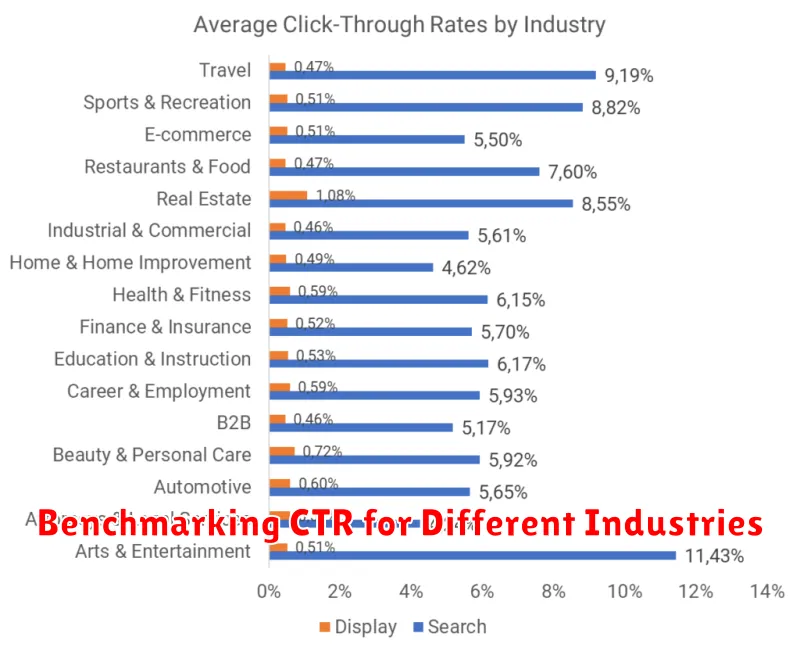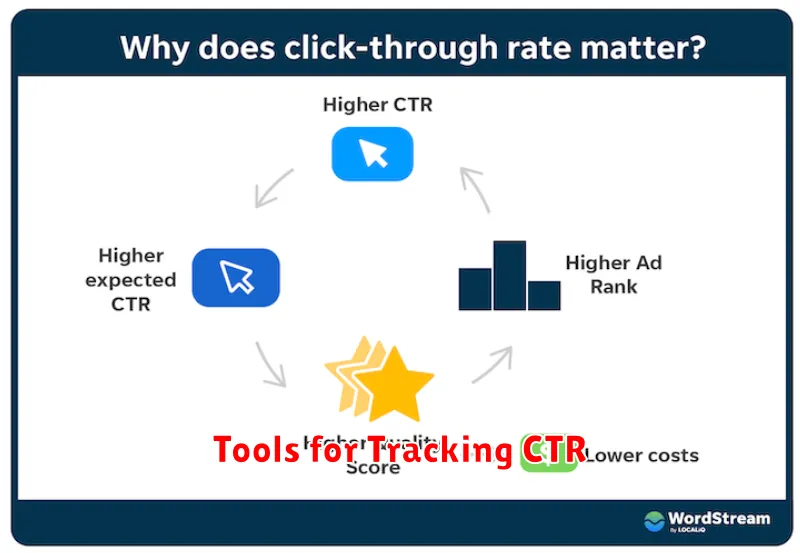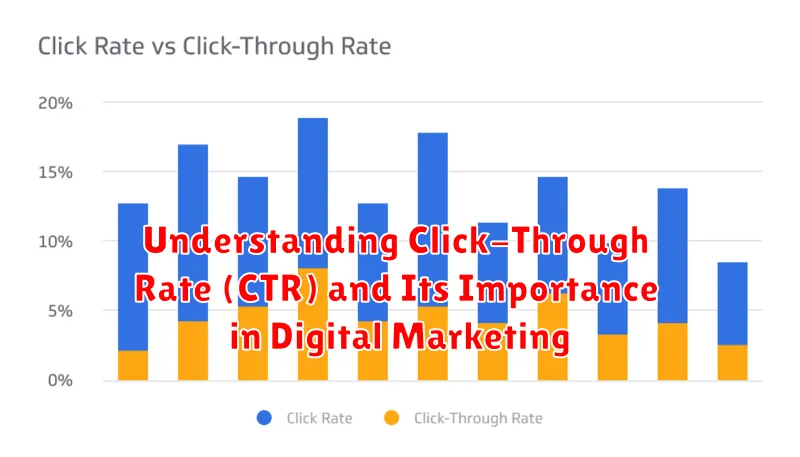In the dynamic landscape of digital marketing, understanding key performance indicators (KPIs) is paramount to success. One such critical KPI is Click-Through Rate (CTR), a metric that measures the effectiveness of your online campaigns. Whether you’re running pay-per-click (PPC) advertising, sending email marketing campaigns, or managing social media presence, CTR provides valuable insights into how users engage with your content and offers a crucial window into campaign performance. A strong understanding of CTR is essential for optimizing campaigns, improving return on investment (ROI), and achieving your digital marketing goals.
This article delves into the intricacies of Click-Through Rate, providing a comprehensive overview of its calculation, significance, and practical application in various digital marketing channels. We will explore how to interpret CTR data, identify factors that influence it, and implement strategies to improve your click-through rates. By the end of this article, you will have a firm grasp of how to leverage CTR to refine your marketing efforts, drive more traffic to your website, and ultimately achieve greater success in the competitive digital arena. Understanding CTR is not just about numbers; it’s about understanding user behavior and optimizing your strategies for maximum impact.
What is Click-Through Rate (CTR)?
Click-through rate (CTR) is a key metric in digital marketing that measures the percentage of people who click on a specific link, advertisement, or call to action after seeing it. It essentially reflects how compelling and effective your online content or ad is at attracting user engagement.
CTR is typically expressed as a percentage. For instance, if an advertisement is displayed 1000 times and receives 50 clicks, the CTR is 5% (50 clicks / 1000 impressions * 100).
This metric is commonly used to assess the performance of various online marketing campaigns, including:
- Search Engine Optimization (SEO): CTR helps evaluate how well your organic search results attract clicks.
- Pay-Per-Click (PPC) Advertising: CTR plays a crucial role in determining the effectiveness and cost-efficiency of paid ads.
- Email Marketing: CTR measures how many recipients click on links within your email campaigns.
- Social Media Marketing: CTR shows how engaging your social media posts and ads are.
By understanding CTR, marketers can gain valuable insights into user behavior and optimize their campaigns to improve engagement and ultimately, achieve their marketing goals.
How is CTR Calculated?
Calculating CTR is straightforward. It’s the ratio of clicks to impressions, expressed as a percentage. Impressions refer to the number of times your ad or link is displayed, while clicks represent the number of times users actually clicked on it.
The formula is:
CTR = (Total Clicks / Total Impressions) * 100
For example, if your ad received 1000 impressions and 50 clicks, your CTR would be:
CTR = (50 / 1000) * 100 = 5%
Why is CTR Important?
Click-through rate (CTR) is a key performance indicator (KPI) in digital marketing for several reasons. It provides valuable insights into the effectiveness of your campaigns and helps optimize your strategies for better results.
A high CTR generally indicates that your ads or content are resonant with your target audience. It suggests that your messaging is compelling and effectively grabbing their attention. This translates to more traffic to your website or landing page, increasing the potential for conversions and ultimately, a higher return on investment (ROI).
CTR also plays a crucial role in quality score calculations used by advertising platforms like Google Ads. A higher CTR contributes to a better quality score, which can lead to lower advertising costs and better ad placements. This means your budget can be used more efficiently, reaching a wider audience for the same investment.
Furthermore, monitoring CTR allows you to track the performance of your campaigns over time. By analyzing trends and changes in CTR, you can identify what’s working and what’s not, allowing you to make data-driven adjustments to your strategies and continuously improve your results.
Factors Affecting CTR
Several factors influence click-through rate, impacting the effectiveness of digital marketing campaigns. Understanding these elements is crucial for optimization.
Relevance
Relevance between the ad or search result and the user’s query significantly impacts CTR. A highly relevant ad is more likely to be clicked.
Positioning
Ad position plays a key role. Ads placed higher on search engine result pages (SERPs) generally receive more clicks.
Ad Copy and Format
Compelling ad copy, including strong calls to action, and the use of appropriate ad formats are vital for attracting clicks.
Targeting
Effective targeting ensures the right audience sees the ad, increasing the likelihood of clicks from interested users.
Device
The device used by the user can also influence CTR. Mobile users may exhibit different clicking behaviors compared to desktop users.
How to Improve CTR
Improving your click-through rate requires a multi-faceted approach, focusing on creating compelling content and optimizing its presentation. Here are some key strategies:
Optimize Your Titles and Descriptions
Compelling titles and meta descriptions are crucial. They are often the first interaction users have with your content. Use strong keywords and create a sense of urgency or intrigue to entice clicks.
A/B Test Your Ads
Regular A/B testing of your ad copy, visuals, and targeting parameters is essential for identifying what resonates most with your audience. Experiment with different variations to discover the most effective combinations.
Improve Your Targeting
Effective targeting ensures your ads reach the right audience. By refining your target demographics, interests, and behaviors, you can increase the likelihood of clicks from users genuinely interested in your offerings.
Use Engaging Visuals
When applicable, incorporating high-quality visuals can significantly improve CTR. Eye-catching images or videos can capture attention and communicate your message quickly.
Utilize Keywords Effectively
Strategic keyword research and implementation are essential for optimizing your content’s visibility. Target relevant keywords that align with user search intent.
Benchmarking CTR for Different Industries

Understanding average CTRs within your specific industry provides valuable context for evaluating your own campaigns. Benchmarking helps determine if your performance is above, below, or on par with competitors.
Industry CTR averages vary significantly. Highly competitive sectors like finance and insurance often experience lower CTRs due to market saturation and increased competition for user attention. Conversely, industries with niche targeting, like B2B software, can see higher CTRs due to specialized audiences.
| Industry | Average CTR (Example) |
|---|---|
| E-commerce | 2.1% |
| Travel | 1.8% |
| Healthcare | 1.5% |
Note: These are example figures and actual CTRs may differ based on platform, campaign type, and targeting.
Common Misconceptions about CTR
Several misconceptions surround click-through rate, often leading to misinformed strategies and unrealistic expectations. One common myth is that a high CTR is always the ultimate goal. While a good CTR is desirable, blindly pursuing it without considering other metrics like conversion rate can be detrimental. A high CTR with low conversions suggests an issue with relevance between the ad and landing page.
Another misconception is that a “good” CTR is a fixed number. Optimal CTRs vary widely based on industry, platform, campaign type, and targeting. Comparing your CTR to unrelated benchmarks can be misleading. Instead, focus on understanding the average CTR for your specific vertical and campaign type and strive for incremental improvements.
Finally, some believe that CTR is the sole indicator of campaign success. While CTR is a valuable metric, it’s just one piece of the puzzle. It’s crucial to consider other metrics like cost per click (CPC), conversion rate, and return on ad spend (ROAS) to gain a comprehensive understanding of campaign performance.
Tools for Tracking CTR

Several tools are available to effectively track and analyze CTR across various digital marketing channels. Choosing the right tool depends on your specific needs and the platforms you utilize.
For Search Engine Marketing (SEM):
Google Ads provides comprehensive CTR data within its platform, allowing you to monitor campaign performance and identify areas for improvement. Similarly, Microsoft Advertising offers robust tracking capabilities for campaigns running on the Bing search engine.
For Social Media Marketing:
Platforms like Facebook Ads Manager, Twitter Analytics, and LinkedIn Campaign Manager provide detailed CTR metrics for social media campaigns. These tools help analyze ad performance and audience engagement.
For Email Marketing:
Most email marketing platforms, such as Mailchimp, Constant Contact, and Campaign Monitor, offer built-in CTR tracking. This allows marketers to measure the effectiveness of email campaigns and subject lines.
For Web Analytics:
Google Analytics is a powerful tool for tracking website traffic and user behavior, including CTR for various elements on your website, like buttons and internal links. This information can be invaluable for optimizing website design and content.

